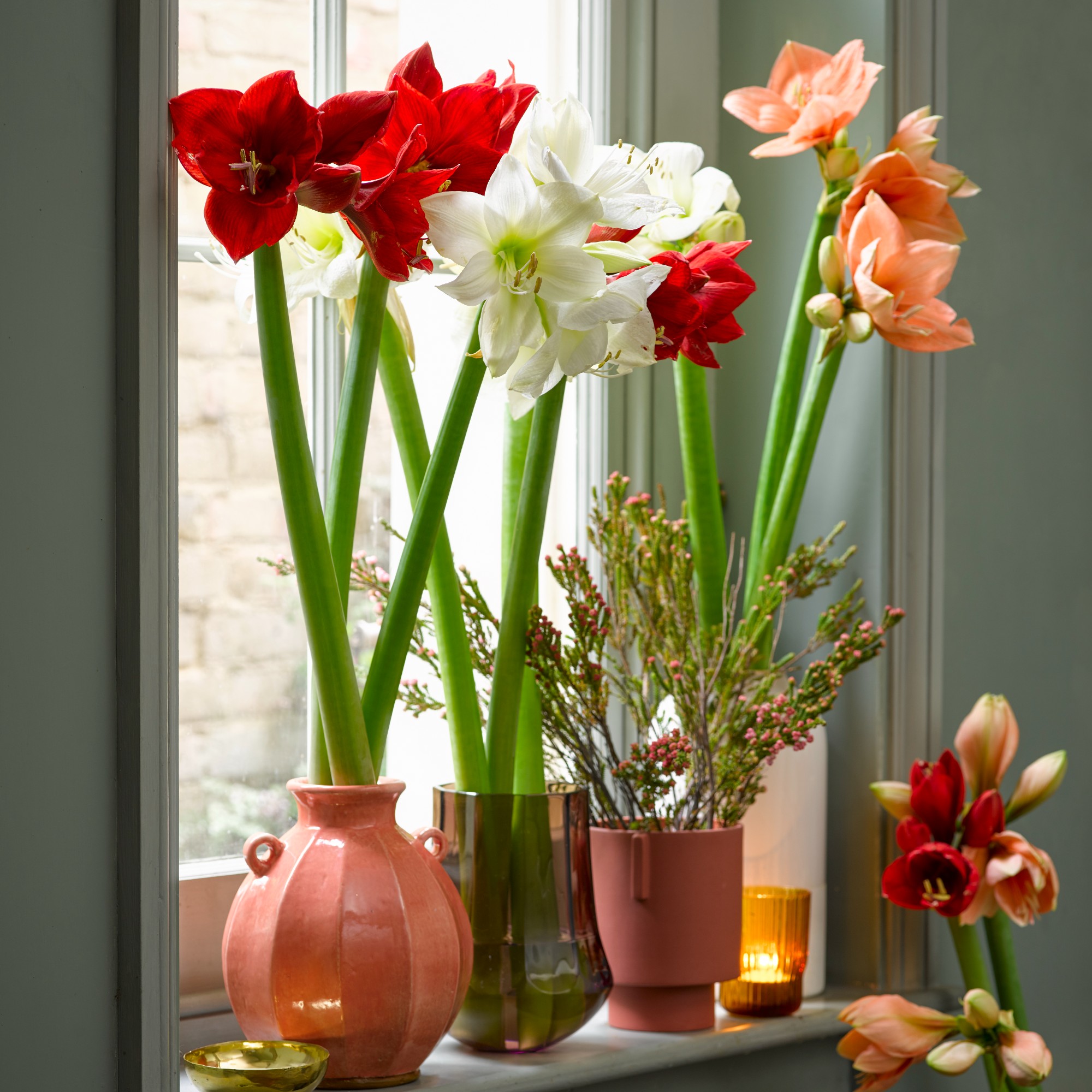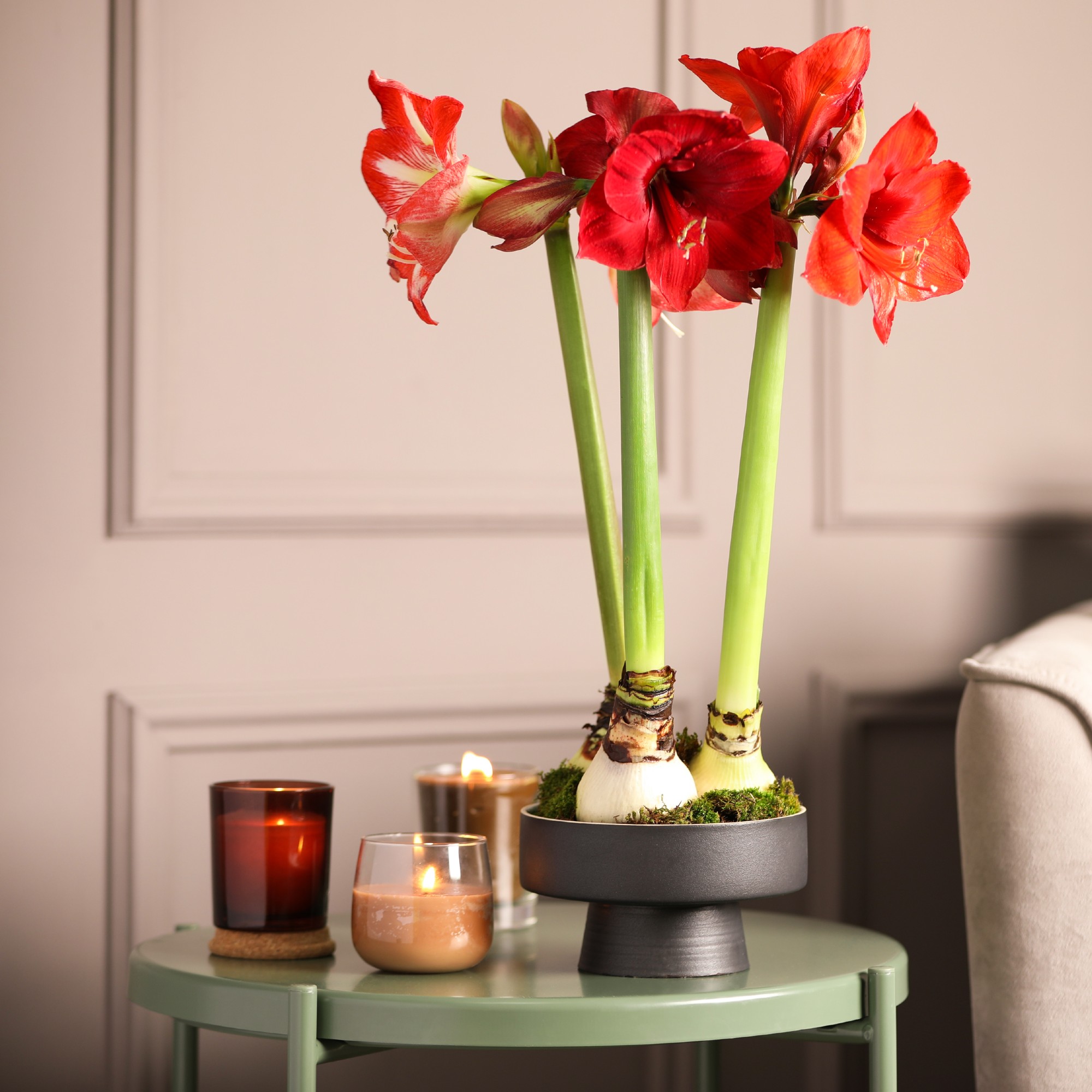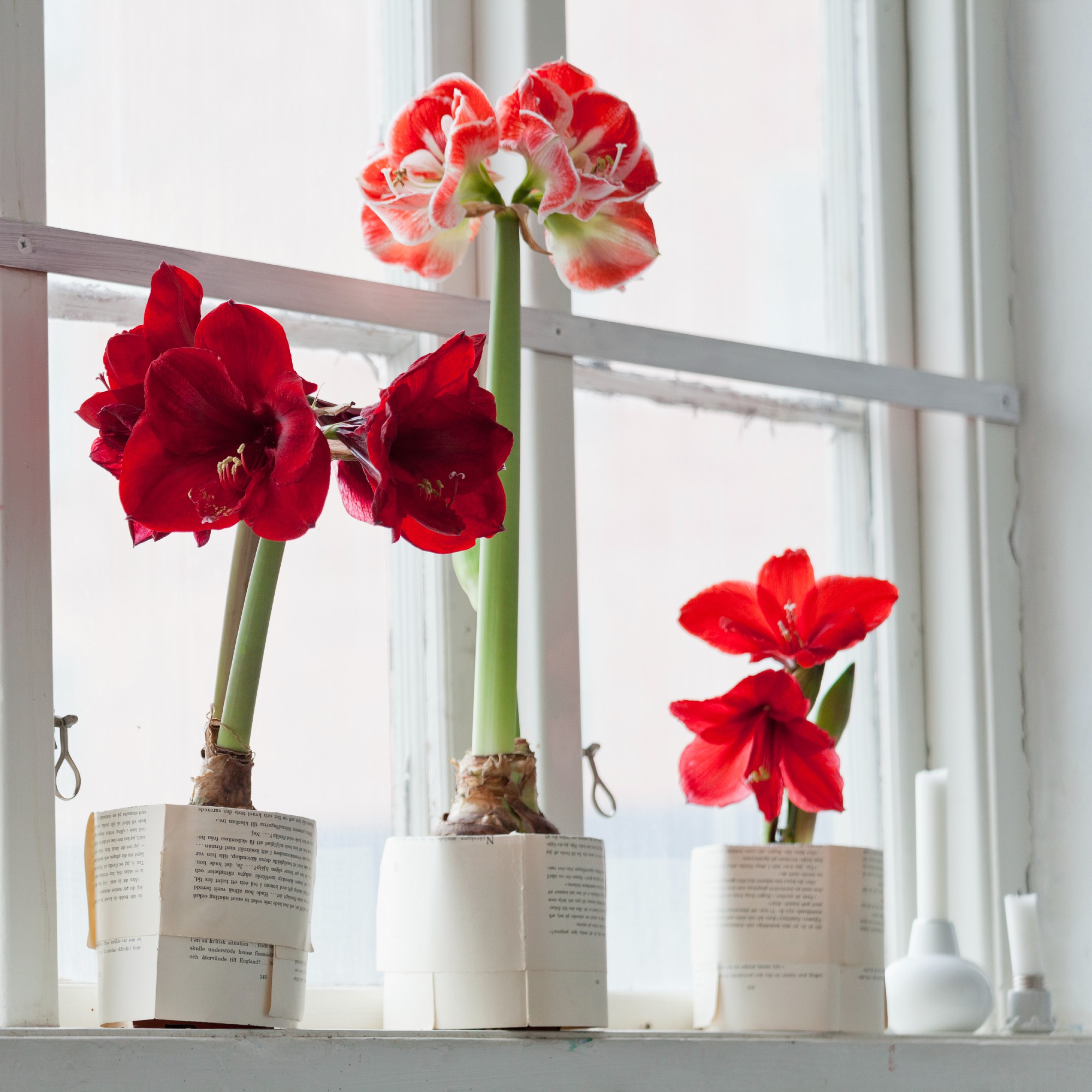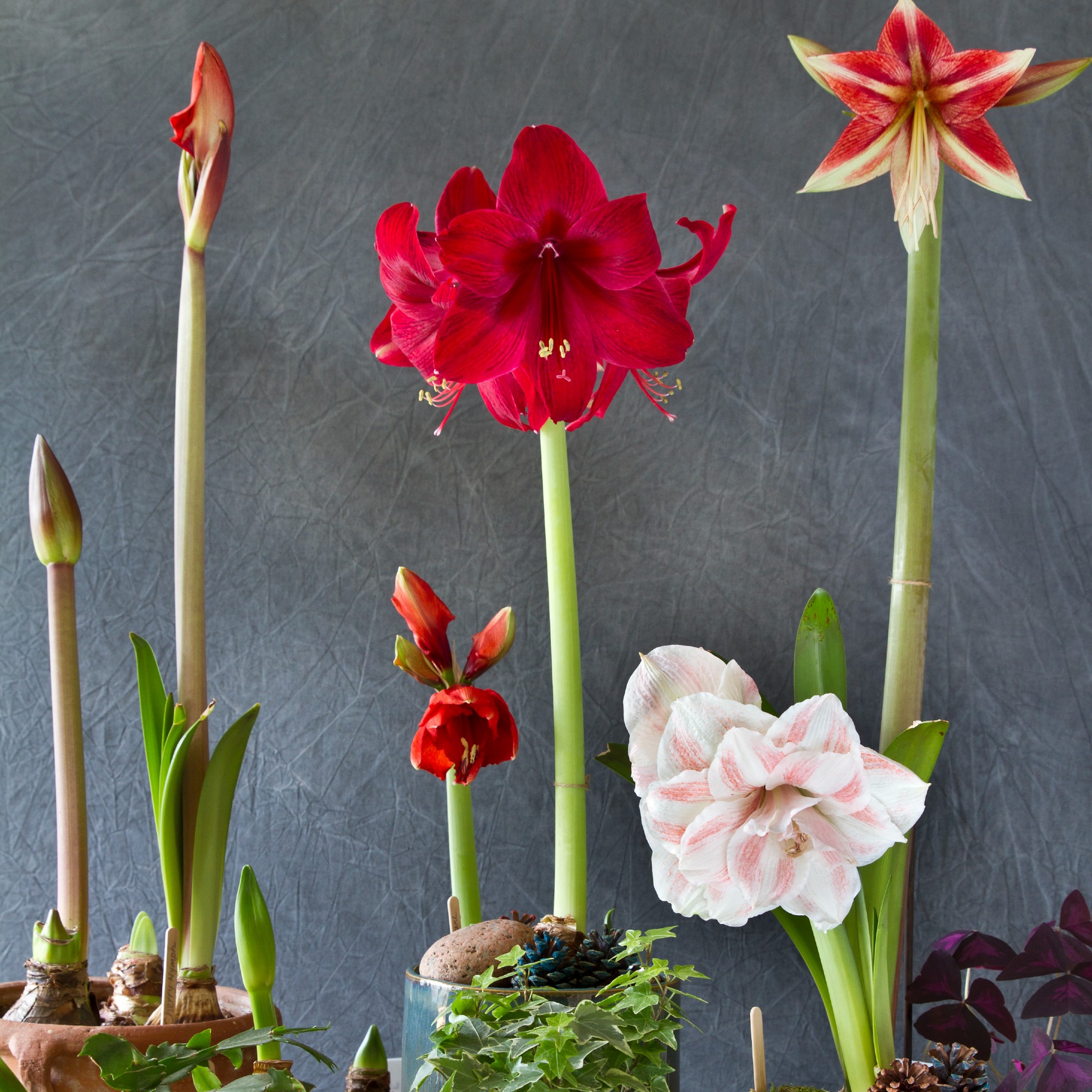
Have you got an amaryllis plant on your hands that just won’t bloom? Are you asking yourself – ‘why is my amaryllis not flowering?’ It's a common issue in amaryllis growing, but there are three main potential reasons behind it which can be fixed.
Red amaryllis flowers are intrinsically linked with the Christmas period as they are one of the most beautiful and vibrant florals that bloom during winter and in time for the festive season - as long as you know when to plant your amaryllis bulbs.
This is why it’s all the more painful when those blossoms are nowhere to be seen as your amaryllis is all leaves but no flowers. But to solve this problem, we’ve consulted plant and gardening experts to give us an insight into why this might be happening and how to fix it.

Why is my amaryllis not flowering?
Indoor amaryllis provides the perfect pop of natural colour to your home during the holidays – but be careful as this festive plant is poisonous to pets. But besides that, it can also be frustrating when those beautiful blooms are struggling to manifest themselves.
These are the reasons why your plant might not be blooming this Christmas.
1. Not enough sunlight
Amaryllis loves light and thrives in it so one of the reasons why your plant is not blooming could be lack of sunlight.
‘Amaryllis tend to prefer bright, indirect sunlight in order to bloom effectively,’ says Steve Chilton, garden expert at LeisureBench. ‘Ensure that your plant is placed in a bright location in order to flower.’
Jack Sutcliffe, co-founder of shed manufacturer Power Sheds, adds, ‘If grown indoors, a sunny windowsill is ideal. Turn the pot regularly to prevent the flower stalk growing towards the light.’

2. Lack of water or nutrients
An amaryllis plant needs to be watered regularly, but not too much as that can lead to bulb rot. And for the best results, feeding it with some fertiliser during the growing season is also recommended. If this is not properly followed, then your amaryllis could be struggling to bloom.
‘To ensure optimal growth and flowering of amaryllis, it is important to water the plant thoroughly when the top inch of the soil is dry,’ Jack advises. ‘Avoid overwatering, and maintain consistent moisture during the growing season.’
But watering should be reduced during the plant’s dormant period.
Steve continues, ‘Use a fertiliser during the plant's growing season in order to ensure it has everything it needs. Be careful not to over-fertilise however, as this could lead to reduced flowering, too.’
One of the best fertilisers recommended for use on amaryllis is actually tomato feed like this one from Amazon.

3. Insufficient dormant period
In order to have a thriving amaryllis plant, it’s important to respect its dormant period and follow a few steps during it.
‘Every amaryllis plant has a non-blooming period and you'll need to figure out when it's time for the flowers to grow,’ explains Petar Ivanov, gardening expert at Fantastic Gardeners. ‘For that, you'll need to understand the life cycle of this plant. Usually, these plants can flower for around 6 to 7 weeks under favourable conditions, which will start just a few weeks after the bulb has been planted.’
One of the most common mistakes when growing an amaryllis plant is rushing it along to re-bloom quickly, instead of giving the plant enough time to rest.
Petar continues, ‘The amaryllis bulb needs time to store nutrients, which is followed by an essential dormant period. When you see the flowers of your plant fade, trim off the stalks but not the leaves. Keep watering and feeding it every few weeks until the leaves fade.’
‘This is when you should stop watering and let the bulb dry out. The bulb needs to sit like this for 6 to 12 weeks in a cool, dry, dark area before you try to make it grow more flowers.’

FAQs
Why does my amaryllis have leaves but no flowers?
Your amaryllis having only leaves but no flowers could be caused by several factors. It might not be getting enough light, water or nutrients from a fertiliser. Or it could be down to the plant not having a proper rest during its dormant period. It could also be because it is leading up to its dormant period.
Should you cut back amaryllis leaves?
Once your amaryllis is finished flowering, you can cut off its stalks but keep the leaves until they start to fade. When they do, you can cut them back.
‘When they have finished flowering, the amaryllis will naturally die back but you can store the bulbs to replant in autumn next year,’ Petar says.
Amaryllis growing can be a tricky business. But once you get the hang of it, it’s easy and so worth it for those beautiful, bright blooms.





!["[T]he First and Fifth Amendments Require ICE to Provide Information About the Whereabouts of a Detained Person"](https://images.inkl.com/s3/publisher/cover/212/reason-cover.png?w=600)

